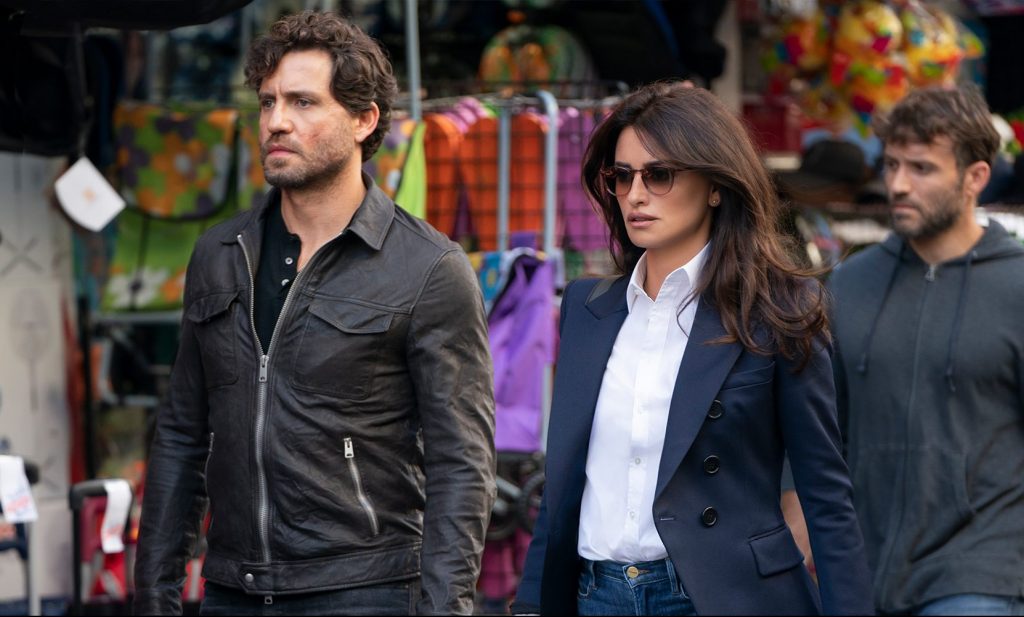There is a trend in studio filmmaking to take a property or genre and adapt it into a female-driven blockbuster. This concept has really gone over well with the general public. This, of course, led to films like Paul Feig’s Ghostbusters and Oceans 8, reboots that transpose the classically male-led franchises into women starring genre vehicles, along with the birth of such films as Atomic Blonde, which plays in the cold war spy thriller genre featuring Charlize Theron in the lead, and Birds of Prey, a women-driven superhero team-up flick. These films, and others like it, were received with varying responses, not all of them amicable. Despite that, it is a noble cause, trying to give more chances in genre films to women as Hollywood reckons with its misogyny and unequal opportunities, it doesn’t always land as some kind of empowering product.
Simon Kinsberg’s sophomore effort after the whimpering end of the X-Men saga, Dark Phoenix, is another in this line of female-driven genre fares. The 355 is an action spy flick in the vein of Mission: Impossible and James Bond (the latter even getting a shout out in the film); from the world ending McGuffin to the globe-trotting nature of the settings, it features rogue agents, betrayals, and all that spy movie goodness that you’d expect from a film of its ilk. But therein lies one of its issues. It’s all the tropes thrown into one mediocre movie.
The film is simple. After a botched operation where CIA agents Mason Browne (Mace) (Jessica Chastain) fails to retrieve a new technological threat, an op that also led to the death of her partner, Nick Fowler (Sebastian Stan), Mace goes rogue to prevent the hard drive falling into the wrong hands, teaming up with Marie Schmidt (Diane Kruger), a BND agent (German intelligence), Khadijah Adiyeme (Lupita Nyong’o), a former cybersecurity specialist for MI6, Graciela Rivera (Penélope Cruz), a therapist employed by Colombian intelligence, and later Lin Mi Sheng (Bingbing Fan), Chinese intelligence agent. Together they work to retrieve the drive, chasing it across the world, from the streets of Paris to the markets of Marrakesh, to an auction house in Shanghai, to prevent the greatest threat the world has ever seen getting into the hands of terrorists.
It sounds like your typical spy film, but the tropes aren’t innately the issue, though. There are plenty of times where this movie is working; there are moments where it’s fun, although usually self-serious, spy flick that is pretty inconsequential overall. What lets it down is how everything is implemented. Kinberg and cowriter Theresa Rebeck understand the spy genre well; their use of the tropes makes that abundantly clear, but that never saves the script as written. The writing can often meander around a lot, and it doesn’t help that Kinberg’s directorial instinct is to pace the scenes in a relaxed manner, even at moments of high intensity, dragging the film along with him as it drones by. The film feels constantly dragged out, inert in every capacity; scenes are often wall to wall dialogue with very little being said in them, stretched to its absolute limit. It becomes a bore, and the only solace is the action scenes.
And yet, those are not very well constructed either. There’re fun concepts behind them, and much like the plot, Kinberg has clearly done his homework on spy movies; he is playing with all kinds of action set pieces, the open street chases in lavish locations, the close quarters shoot out in mundane settings, the action scene in the corridors and back doors of a high-class party, everything is there. And from what you can generally see, it looks pretty well constructed…that is, if you can see it. The action scenes are filmed in close up and mids and cut within an inch of its life, rapidly moving between shots, so much so that it’s hard to ever really gauge what is happening. It’s overwhelming at times how quickly it cuts in these scenes, to the point of feeling a headache coming on.
The sequence that feels the most urgent is also the best action scene, let alone the best scene in the film. A silent, secret chase through the crowded markets in Marrakesh. Silencers on the guns, disguises, back streets, hiding bodies it has a clear goal, and while it’s simplistic, it’s the tensest, most engaging action scene in the film. The action is slower in construction; the closeups Kinberg uses for his action feel perfectly in tune with the confines of the densely populated market. It’s a fun sequence, maybe the most fun the film ever gets, and it’s all down to the slower, more claustrophobic construction of the sequence and how everything that the film is doing lines up for a moment.
The 355 could totally work as a fun little gender-flipped genre flick, even with all of the tropes it plays with. It just feels so lacking in the execution that outside having seen these beats executed in other films, it just feels like it fumbles it all. It’s not a dire effort; the performances are good, particularly from Kruger and Nyong’o, who really show up and bring a lot of depth to their roles and is an excellent reminder of what great actors they can be when Hollywood isn’t forgetting about them. It’s just generally disappointing that a solid, if not over typical, action spy film feels so bland and uninteresting when it comes together to create this film. It never has the potential to break new ground. Still, it had a chance to play with the spy genre and flip the script for how the genre generally treats women, sadly though it just feels like it’s hitting the same beats over and over to an effect less than engaging. If you enjoy spy action films and don’t mind seeing something that just hits the same beats as every spy movie has, then this is a pretty solid time, if not underwhelming. It’s not egregiously bad outside most of the action scenes, which are a mess. Still, The 355 is never anything fun enough or entertaining enough to supersede the reliance on tropes.
The 355 opens on Thursday in cinemas.













